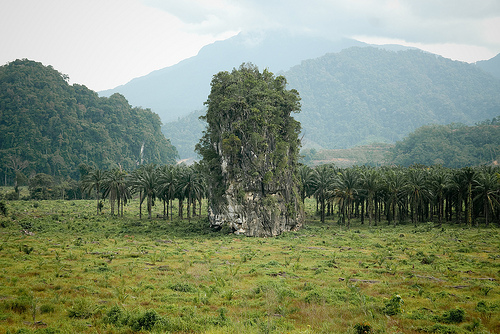QUESTION
I have been working a 4-week rotation between the USA and East Kalimantan (Borneo) for about 2 years. While on Borneo, I am in the jungle much of the time. I have never contracted malaria. I am embarrassed to say I thought I had been inoculated for malaria when I first started working here. I just spent 10 days in a hospital last month fighting a blood degenerating viral infection not unlike hemophiliac dengue. Is there a preferred Rx I should take for malaria? I have no allergies to medicines that I am aware of. I am 57 year-old male.
ANSWER
Given the amount of time you spend in rural areas of Borneo, you probably should consider anti-malarial medication to prevent infection. There are three types of drug which are recommended against malaria in Indonesia: atovaquone-proguanil (sold as Malarone), mefloquine (sold as Lariam) and doxycycline. Each has pros and cons: Malarone and doxy have to be taken every day, while Lariam is only taken weekly, which might make it more convenient. However, both doxy and Lariam should be taken for a full 4 weeks after leaving the malarial area, while Malarone is only taken for a week after leaving.
In my opinion, Malarone has the fewest and mildest side effects (though some people complain of upset stomachs and disturbed sleep patterns), while doxycycline is sometimes a problem in the tropics since it can cause sun sensitivity. Lariam is not recommended for people with a history of mental illness, and has been reported to have psychiatric side effects, including nightmares, hallucinations and even altered behavior. Of the three, Malarone is the most expensive, and doxycycline usually the cheapest.
In terms of taking them long term, I don’t know of any studies that look at long term usage of Malarone (it is expensive enough that I doubt anyone takes it for very long trips!), while people do safely take doxycycline for periods of several months, and Peace Corps volunteers and American expats routinely take Lariam for periods of several years.
Of course, many people living long term in malarial areas do not find it convenient to take pills to prevent malaria, and focus on other preventative measures, mainly revolving around killing mosquitoes and avoiding being bitten. Sleeping under a long-lasting insecticide treated bednet is one such method, which is cheap, easy and very effective.
Incidentally, the area you are in is interesting from a malaria point of view since it is one of the few places where transmission of Plasmodium knowlesi occurs. This is a type of malaria which was thought to be only present in macaque monkeys, until human cases started becoming more prevalent a few years ago. Now it is considered a “human” type of malaria, and an emerging threat in south-east Asia. It’s important to be aware of it as the mosquitoes which transmit it tend to be forest-dwelling (since that is where the macaques live), and although very easily treated with chloroquine or other anti-malarials, an infection can progress rapidly into quite severe disease.
If you suspect you might have malaria at any point, therefore, it is crucial to get out and get tested at a clinic or hospital, where they can promptly treat you if you test positive. Be aware also that if tested via microscopy, P. knowlesi can often be confused with P. malariae or P. vivax; while the initial treatment is likely to be the same for all three, if you had P. vivax you might be told about taking an additional medication, called primaquine, to prevent future relapses, whereas relapses do not occur with P. knowlesi.
